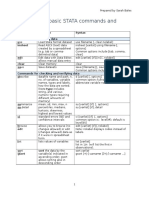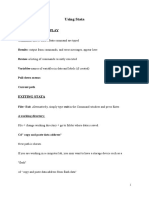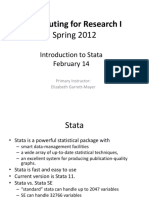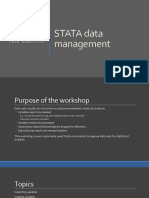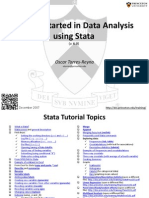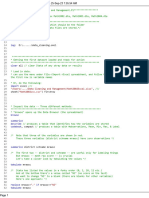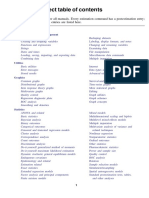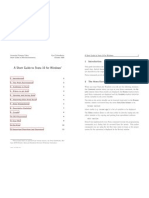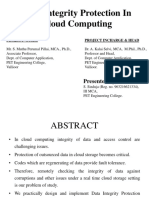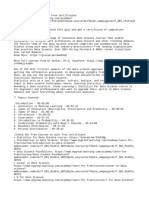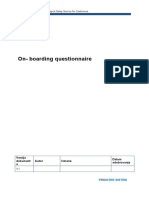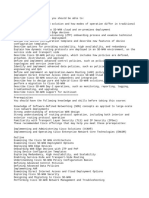0% found this document useful (0 votes)
37 views63 pagesNBDM Training 2016 - Module 2 - Data Management Using Stata
The document describes a National Beneficiary Data Training that will take place from April 28 to May 7, 2016 at the Cloud 9 Hotel in Antipolo, Rizal. The training will cover getting started with STATA, data profiling, analysis and reporting using STATA. At the end of the training, participants will be able to perform data management and analysis in STATA, produce graphs and tables for reporting, and use STATA for data profiling and approved updates.
Uploaded by
Sonny AsisCopyright
© © All Rights Reserved
We take content rights seriously. If you suspect this is your content, claim it here.
Available Formats
Download as PDF, TXT or read online on Scribd
0% found this document useful (0 votes)
37 views63 pagesNBDM Training 2016 - Module 2 - Data Management Using Stata
The document describes a National Beneficiary Data Training that will take place from April 28 to May 7, 2016 at the Cloud 9 Hotel in Antipolo, Rizal. The training will cover getting started with STATA, data profiling, analysis and reporting using STATA. At the end of the training, participants will be able to perform data management and analysis in STATA, produce graphs and tables for reporting, and use STATA for data profiling and approved updates.
Uploaded by
Sonny AsisCopyright
© © All Rights Reserved
We take content rights seriously. If you suspect this is your content, claim it here.
Available Formats
Download as PDF, TXT or read online on Scribd
/ 63


